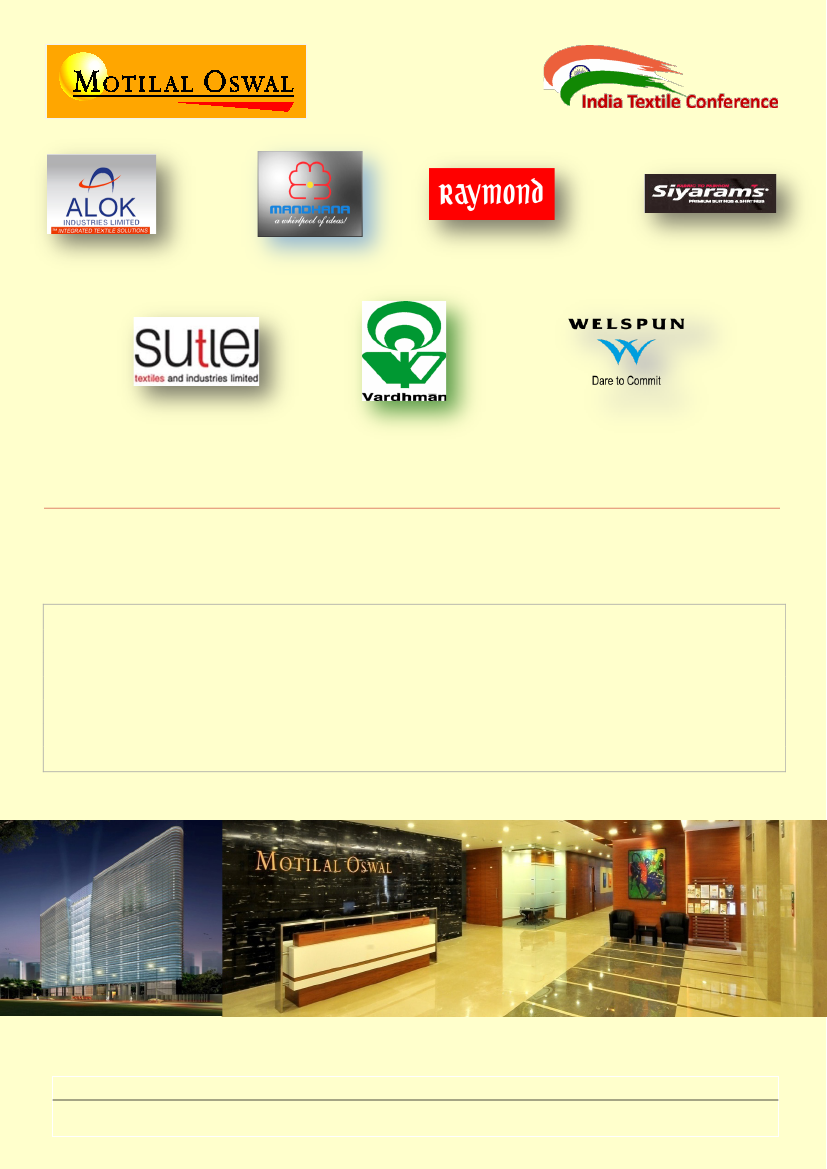
India Textiles Post Conference Report| July 2014
Featuring Company Connect
Takeaways from company interactions
Textiles
Largest employment generating industry in India, contributing over 14% to total industrial
production and 12% to India’s export earnings.
Industry is expected to double to USD141b in the next seven years.
Currency advantage, cotton availability, skilled and cheap labor, subsidized capital from government
and growing capacities provide huge potential.
Impediments such as capital availability and labor reforms are likely to be addressed soon by the
government.
Niket Shah
(Niket.Shah@MotilalOswal.com); +91 22 3982 5426
Atul Mehra
(Atul.Mehra@MotilalOswal.com); +91 22 3982 5417